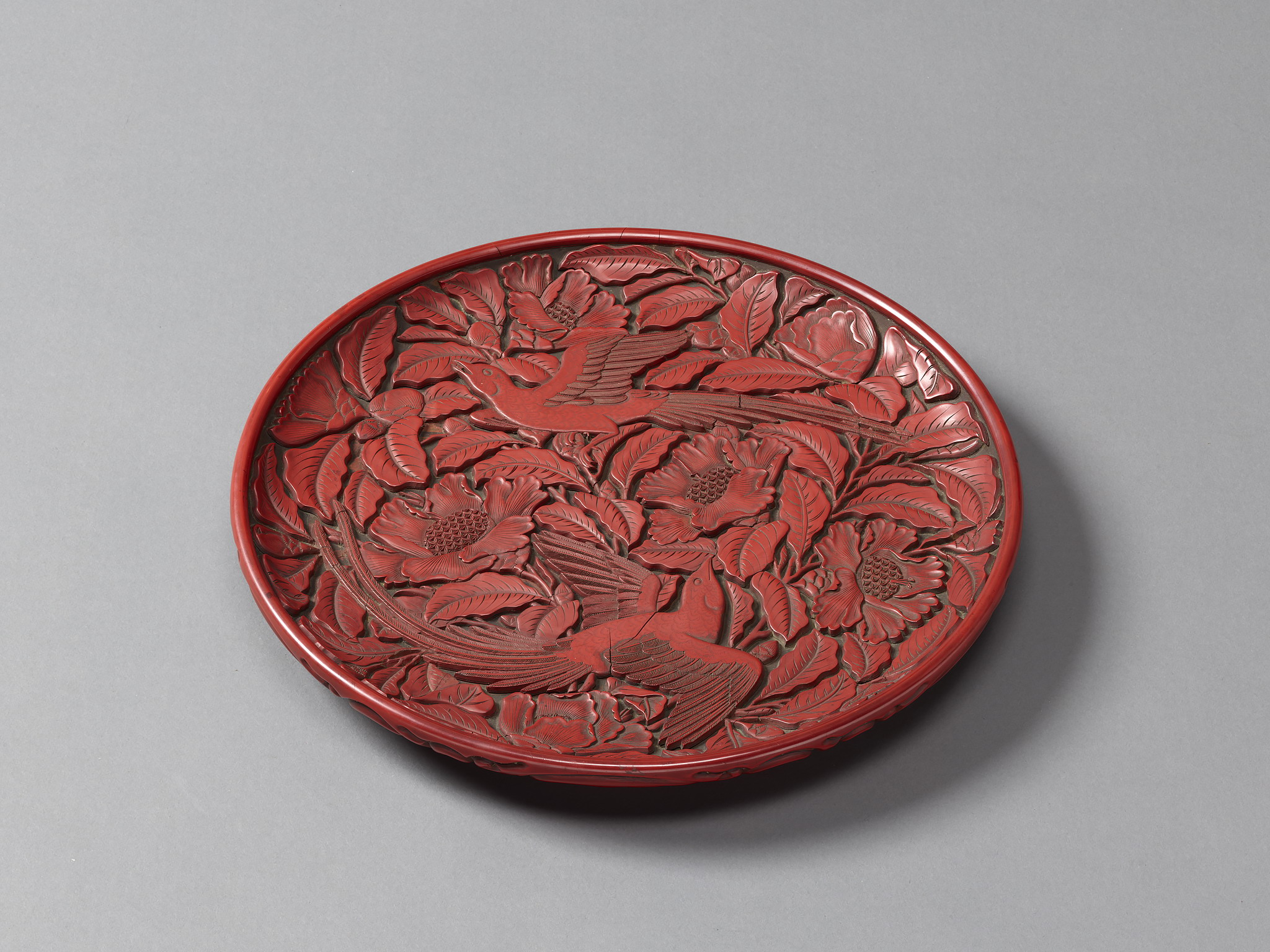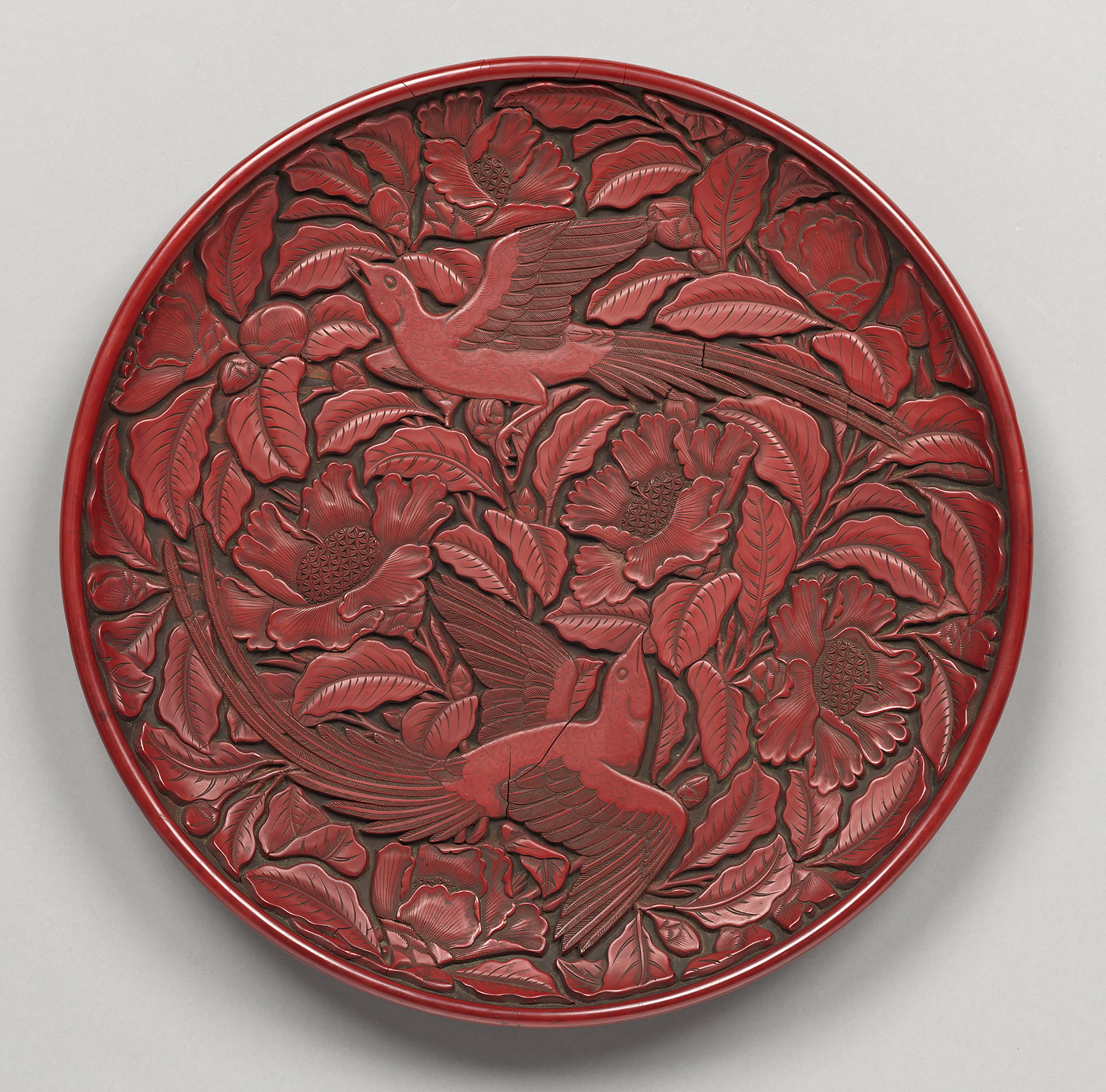- TOP
- The KNM Collection
- Masterpieces of the KNM
- Lacquerware
- Carved Cinnabar Lacquer Tray with Camellia and Magpie Designs
*Click or tap image to enlarge.
Lacquerware
Carved Cinnabar Lacquer Tray with Camellia and Magpie Designs
- China, Yuan Dynasty, 14th century
- Diameter 32.4 cm, H.3.5 cm
- Korin-in Temple, Kyoto
Tsuishu is a technique in which red lacquer is applied layer upon layer onto a wood core. When the thickness has built up hundreds of layers, the hard lacquer is engraved with designs. This excellent Chinese technique requires an extraordinary amount of production time.
Tsuishu engraved lacquerware was introduced to Japan together with Zen Buddhism during the Kamakura Period. Later, in the Muromachi Period, the lacquerware was used to decorate private libraries in the "Chinese style." Lacquered works made by this method were also used for the tea ceremony utensils. Tsuishu was considered to be the finest of Chinese lacquerware.
The entire surface of the top of this tray is has been carved into a design of camellias and blue magpies. The tray was probably made during the Yuan Dynasty in China. The name of the Chinese master craftsman, Zhang Cheng, has been finely engraved on the back of the tray, but this inscription is assumed to have been added later in Japan. The inscription proves that the Japanese owners in the Muromachi Period put a high value on this tray.








